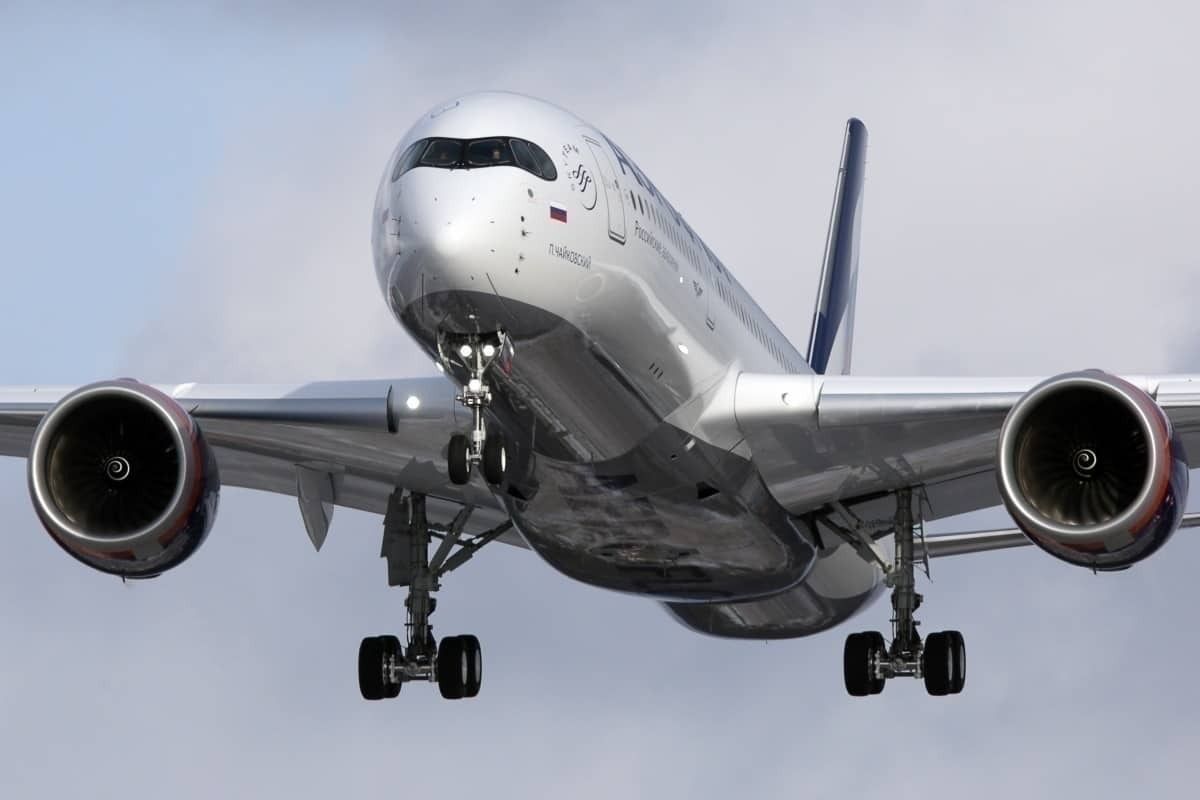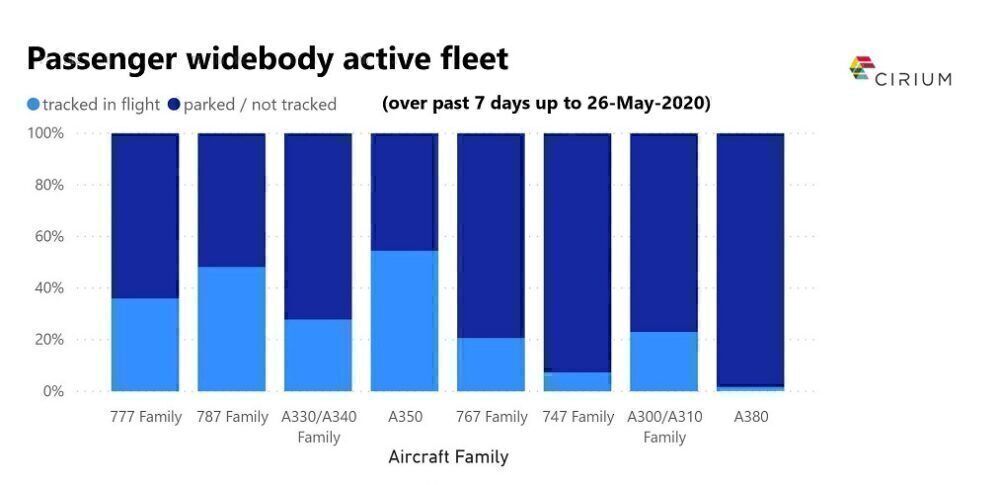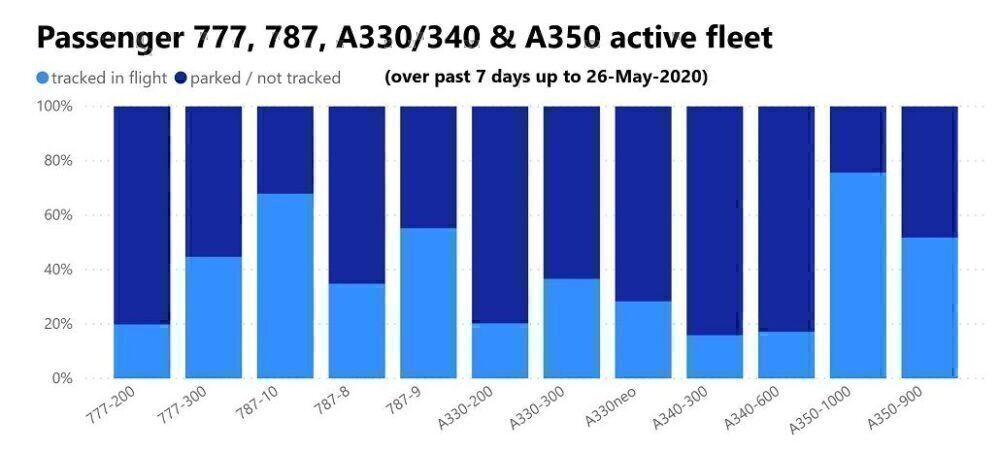Air travel capacity is at low levels, as airlines adjust to governmental restrictions and weak demand. Airlines have found themselves in a new reality, where they "hand-pick" which widebody aircraft to fly and which to keep grounded. Many carriers are under worrying financial pressure; hence it is not surprising to see more fuel-efficient machines with higher cargo capacities (such as A350's and 787's) being utilized more than their older counterparts.
Modern widebodies are used more often
We analyzed the numbers from Cirium, focusing on seven days up to and including Tuesday 26th May. Modern twinjets such as the A350 and the 787 families are utilized significantly more often than other airframes. More than half of the global A350 fleet has flown at least once during the last week, with the 787 family being utilized at around 45%.
The next most used aircraft type was the Boeing 777 family, with close to 40% utilization. Older twinjet aircraft, such as the Boeing 767, Airbus A330, and Airbus A300/310 families, are being used half as often than the A350's and the Dreamliners. Lower operating efficiency seems to have impacted the utilization rates of the 747's and A380's, with barely any flights operated by both of these aircraft types.
Cargo Capacity is key
Taking one step further, and focusing on the four most utilized widebody families, we can see that the newest, largest and most efficient airframes are being used more often. Here's what we are seeing:
- 60% usage of 787-10s
- 60% usage of A350-1000s
- 50%+ usage of 787-9s
- 50%+ usage of A350-900s
The key reason is most likely due to the fuel efficiency of these aircraft together with cargo and passenger capacities. The first two bring economic benefits to the airlines, while higher passenger capacities simplify the implementation of social-distancing rules onboard.
In fact, the A350-1000 can carry up to 54 passengers more than the -900 version, while also having a belly-cargo capacity of 44 LD3s or 14 pallets. That is eight more LD3s or three pallets more than the A350-900. On the other hand, Boeing 787-10 has a cargo capacity of 40 LD3's, while the -9 variant holds 36 LD3s. With fewer passenger flights taking place, transporting additional cargo can prove financially beneficial to the carriers.
It thus seems that the utilization of a given aircraft type strongly correlates with its cargo capacity. The top 4 most utilized aircraft types could be ranked in the same order of cargo capacity (and passenger capacity too).
Cargo capacity and efficiency
Yet, cargo capacity alone is not the deciding factor, as the 777-300ER has higher cargo capacity than both the 787 and A350 aircraft families. Also, the A340-600 and A380 offer higher cargo capacities than the A350-900 and 787-9 versions. Yet all three of these types are simultaneously less fuel-efficient.
Thus, it becomes clear that it is a mix of cargo capacity and efficiency that is currently the preference of most airlines. The importance of fuel-efficiency is underlined by very low utilization of four-engine jets. Nowadays, we see barely any A380's taking to the skies, a similar case for passenger 747's.



